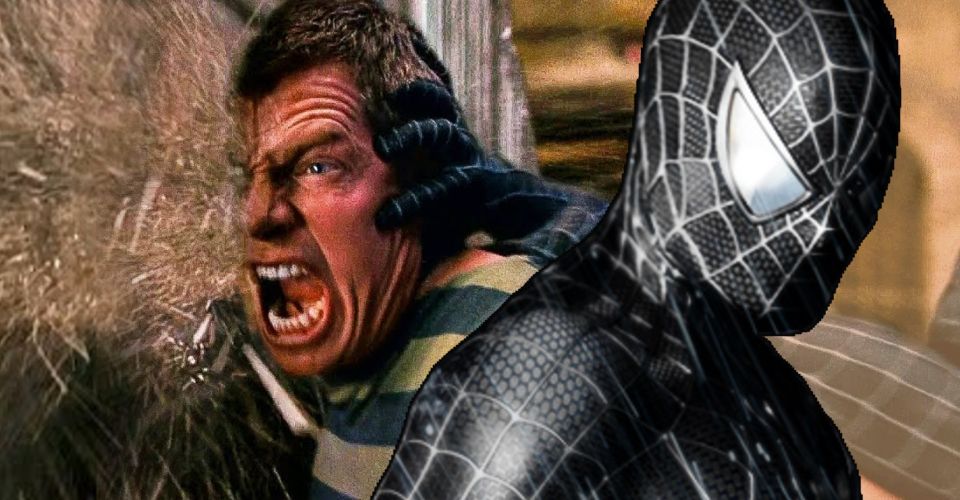Spider-Man 3’s Most Unnecessary Villain Was Sandman (Not Venom)

The most unnecessary villain in Sam Raimi’s Spider-Man 3 was Sandman and not Venom. The fan-favorite symbiote villain was added to the film despite Raimi’s preference to use Vulture at the behest of Sony’s Avi Arad. It was believed that Raimi had leaned too heavily on the Spider-Man villains that he favored over the ones that Spidey fans were drawn to. The result, as Arad and Raimi have both admitted since, was a mess that painfully reflected the director’s apathy to the studio’s creative direction.
Released on the back of the genre-defining and adored Spider-Man 2, Raimi’s ambitious threequel sought to capitalize on its predecessor’s popularity by increasing the stakes, bringing Harry Osborn’s arc to a close and giving fans more of what they’d previously loved. Unfortunately, the film is now held up as the poster boy for having too many balls in the air. In seeking to do too much, Spider-Man 3 satisfied painfully few of its objectives and was a comparative failure, despite outgrossing Spider-Man 2. In far less tangible terms, however, Spider-Man 3 was disastrous in under-serving its own characters.
The most popular criticism usually goes that Raimi’s Venom feels like a betrayal of the comics character and that the symbiote compromises the tone of the rest of the movie. And while the villain does feel tacked on, that is because of Raimi’s reluctance and apparent disinterest in using him, rather than Venom not suiting the narrative. Because, on paper, Venom is a far more appropriate piece of Spider-Man 3‘s narrative jigsaw than Thomas Haden Church’s Sandman.

Peter Parker’s arc in Spider-Man 3 fits the overall philosophy of great power coming with great responsibility. It offers conflict (to a character usually not known for darkness) in a way that helps reinforce the central premise of the trilogy. With that in mind, the symbiote Spider-Man suit that leads Peter to darkness is absolutely crucial and so too is Harry Osborn’s part. With both Peter and Harry, there’s an exploration of how traumatic pasts and access to power can lead to characters taking different paths. Osborn and Parker’s stories mirror one another as they are both tempted by darkness before finding the light. Having them combine in their moment of revelation to fight Venom – the source of Peter’s conflict and near-miss fall from grace – makes perfect narrative sense. That’s why the oft-derided “emo Peter Parker” dance scene is so clever and actually fits.
On the other hand, while Sandman is a great villain and Church’s performance is the best in the entire film, his arc fits more with Peter wrestling with his part in Uncle Ben’s death in the first movie. That is a huge deal and while Sandman’s complex morality does fit with the idea of a moral spectrum, it would be better served in an entirely different Spider-Man film mirroring him with a more overtly villainous bad guy, like Vulture. Which is probably why Raimi wanted that line-up in Spider-Man 3. Distracting what should have been the main idea of the threequel – Peter’s temptation and redemption in an almost Milton-esque story – only ended up reducing the impact of Sandman and Venom (whose changes from the comics would have made more sense with the right contextual focus) and giving James Franco’s new Green Goblin no space to breathe. It wasn’t Venom that spoiled Spider-Man3, it was Raimi’s refusal to drop Sandman (or use him in the right film) and the subsequent sidelining of Osborn and Peter Parker’s twin-stranded narrative.
- Morbius (2022)Release date: Apr 01, 2022
- Venom: Let There Be Carnage (2021)Release date: Oct 01, 2021
About The Author


















